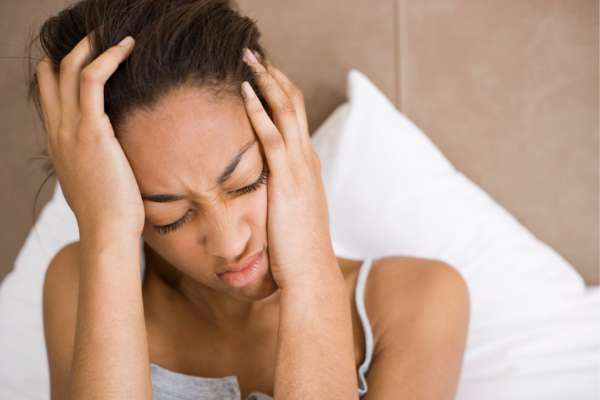Headaches and Migraine are one of the most common presentations we see as Osteopaths in our clinics. That’s not surprising when Headache Australia estimates that 4.9 Australians are likely to experience Migraine and up to 7 million Australians are affected by tension-type headaches.
As osteopaths, we work with your bones, joints, muscles, nerves, connective tissue and circulation to help your body function the way it’s meant to. So naturally, when a patient presents to us with a headache, we want to know what is happening in that person’s whole body, not just the head!
IS YOUR NECK PAIN RELATED TO YOUR HEADACHES?
One of the most common causes of headaches is referred pain from the muscles, joints and nerves in the neck and upper back. Stressed or strained muscles can form trigger points. Trigger points are tender spots in a muscle belly that when over-stimulated refer pain to another part of the body. The trapezius muscle, sternocleidomastoid muscle and sub-occipital muscles of the neck are some of the more common muscles that can be a source of referred pain to the head.
Headaches that are a result of referred pain from the neck are known as “cervicogenic headaches”. In this type of headache referred pain is often felt in the base of the skull, temple, forehead or jaw.
Cervicogenic headaches can be due to a number of factors including postural imbalance, traumatic injury (whiplash), disc degeneration and general muscle tightness resulting in extra strain on the muscles, joints, nerves and bones in the neck.
POSTURAL HEADACHES
Posture can play a significant role when it comes to cervicogenic headaches. Sitting for long periods can be detrimental for our health in many ways but did you know that it can also contribute to cervicogenic headaches? Sitting down on a couch, working at a desk, using your laptop at a cafe or spending several hours scrolling through your phone can all have a negative effect on your posture. When we spend too long in these positions on a daily basis we can develop a ‘slumped’ posture that puts increased strain and tension on the muscles, nerves and joints in our neck that help support our head. When these structures are compromised it can lead to experiencing pain and stiffness in the upper back, neck and shoulders as well as headaches.
To avoid placing unnecessary strain and tension on your spine whilst sitting for long periods we recommend you:
- Take regular breaks every hour to move away from the desk or computer by getting a drink or going to the toilet
- Take mini stretch breaks at your desk or in your chair to gently stretch your neck and shoulders
- Drink plenty of water throughout the day to keep muscles hydrated
- Check your posture regularly
- Set an alarm on your phone to remind you to move!
TRAUMATIC HEADACHES
Whiplash is an injury that occurs after a sudden and severe neck movement. The most common cause of this injury is when someone’s car is rear-ended by another car however whiplash can also occur as a result of contact sports, falls in which the head jerks backwards and trauma to the head.
Whiplash injuries often result in:
- Pain or stiffness in the neck
- Headaches
- Fatigue
- Sprains, strains and microtears in the ligaments and muscles of the neck
Some people also experience:
- Nausea
- Dizziness
- Loss of balance
- Tinnitus (ringing in the ears)
- Sleep disturbance
- Difficulty concentrating
HOW CAN OSTEOPATHS HELP?
Osteopaths work with your bones, joints, muscles, nerves, connective tissue and circulation to help your body function the way it’s meant to. Depending on the cause of your headache, your osteopath may work through your neck, ribs and upper back to improve your general mobility and will also look at your lower back and pelvis to assess your overall posture. These areas can often become stiff due to repetitive strain placed on the body from sitting at computers, poor posture and stress.
You may also be given exercises and stretches to help prevent symptoms recurring or be advised on correct posture and ergonomics within your home and work environment. If relevant your osteopath may also suggest diet or lifestyle changes that can assist in the prevention of future headaches.
Our osteopaths use a range of different treatment approaches for patients presenting with headaches. Cranial Osteopathy is a more subtle style of treatment where light pressure is applied to different areas of the body to release strain or tension that may be compromising your health. Some of our osteopaths will also use massage, stretching of the muscles along with mobilisation and manipulation of the spine to help alleviate strain and tension associated with headaches.
If you aren’t sure what approach is right for you please talk to one of our team so that we can match you with the right practitioner by calling us on 5200 1044 or you can book online with the practitioner of your choice here.
